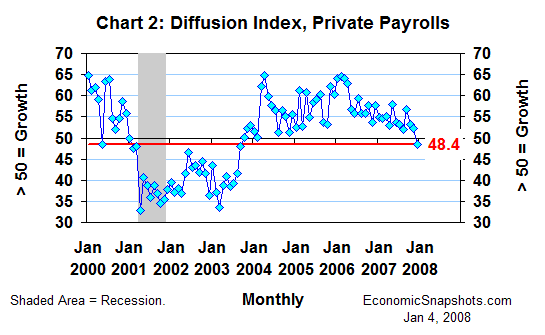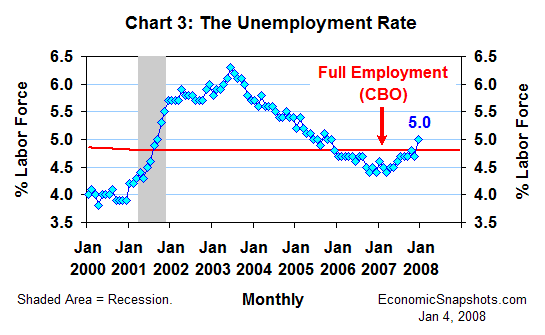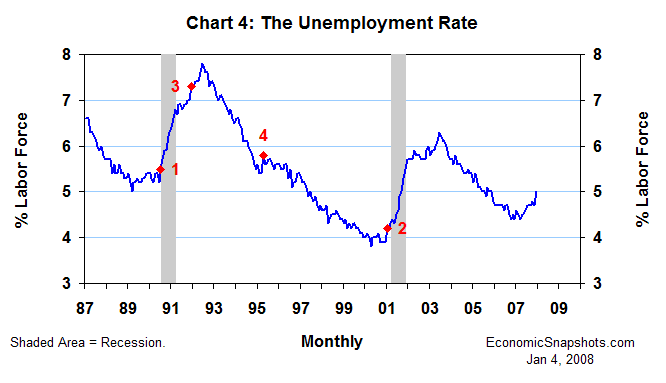
| Back to Index |
January 4, 2008 – U.S. payroll employment edged up by 18K in December – essentially unchanged after a revised 115K November increase (Chart 1).

Payroll growth averaged 97K per month for the three months through December, and 111K per month for 2007 as a whole. That compares to gains averaging 189K per month in 2006 and 212K per month in 2005. Thus, the trend in job growth has slowed over the last two years.
The sluggishness in December payrolls was broadly based, as indicated by the one-month diffusion index for private payrolls. The latter fell by 3.8 index points to 48.4 in December (Chart 2).

A value of 50 is the breakeven point for this payroll diffusion index. December’s sub-50 index level means that more industries reduced their payrolls than added new jobs that month.
According to the household survey, the unemployment rate rose by 0.3 percentage points to 5% in December (Chart 3). Further, with the labor force virtually unchanged in December, job losses seem to have been the key factor driving the unemployment rate higher.

This was the most striking development in the December labor market data. It is unusual to see such a large one-month leap in unemployment rate, except when the economy is already in a recession.
There have been only four exceptions to this “rule” in the last twenty years (Chart 4).

In two of these cases, a recession followed within one to three months. A third exception occurred during the first year of the recovery from the 1990/91 recession – a time when the labor market was still showing lingering recessionary effects. The fourth exception occurred during the Fed-engineered “soft landing” of 1995-96.
Suzanne Rizzo